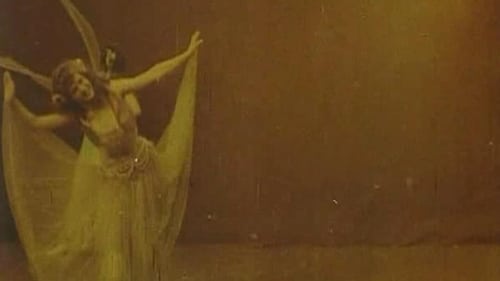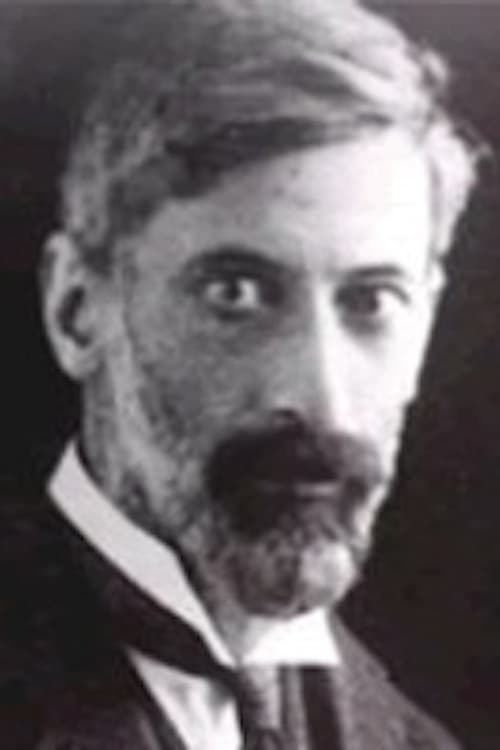The Vanishing Lady (1897)
장르 :
상영시간 : 1분
연출 : Robert W. Paul
시놉시스
Robert W. Paul production, "The Vanishing Lady", 1897. Man in roman costume carves figure of girl in doorway. As he finishes, the statue comes to life. The man expresses great love and desire for her, but every time the man goes to grab the girl she vanishes and reappears somewhere else.

A woman wearing dragonfly wings performs a romantic dreamlike dance.

A stationary camera looks across a busy corner toward a store front marked "The Divan." The words "des fees" are beneath. A cortege of Arabs, about 20 persons in the party, walk past; the dignitaries are in front, attended by men with horns and drums. Coming in the other direction are local Swiss, who pay little attention, and a group of native-garbed Africans. The dozen or so well-dressed denizens of Geneva who are sitting on the steps of the Divan take it all in.

A group of workers, aided by a steam-roller, are leveling the ground during the construction of the Jonage canal, a diversion of the Rhône river, which was built in order to supply the hydroelectric plant of Cusset.

The festive start and disastrous aftermath of the launch of the H.M.S. Albion.

De Düva is a 1968 Oscar-nominated American short film that parodies the films of Swedish director Ingmar Bergman, including Wild Strawberries and The Seventh Seal. The film borrows heavily from the plot lines of some of Bergman's most famous films. The dialogue, seemingly in Swedish, is actually a Swedish-accented fictional language based on English, German, Latin, and Swedish, with most nouns ending in "ska." The film was nominated for an Oscar for Best Live Action Short Film.

“A file of Spanish soldiers line up the Cubans against a blank wall and fire a volley. The flash of rifles and drifting smoke make a very striking picture.” (Edison film catalog)

“Shows how a full carload of coal is loaded onto a vessel every thirty seconds at the great Erie Railroad Docks, Cleveland, Ohio. Great clouds of coal dust rise as each car is unloaded.”

People dismount and mount a gondola.

In slow motion, a line of giddy, possibly drunk men dressed in Scottish highland outfits perform a disorderly dance routine in front of a sign advertising the product of the title. This film is often incorrectly described as the first filmed advertisement.

"An interesting exhibit by Hadji Cheriff, of the original Midway Plaisance. Twirls his rifle over his shoulder, behind back, under leg, both hands and one hand."

Two women in long skirts, wearing hats, and carrying umbrellas, gossip beside a fence. Two men on the other side of the fence reach through from underneath and nail the women's skirts to the boards. Off the men run leaving the women to discover their fate. What will they do?

Four young people throwing buckets of water at each other.

Students in Lyon.

Some men get into hijinks at a sidewalk cafe.

Young people dive into the sea by jumping off a manmade wooden raft, while a small boat loaded with passengers passes by.

Showing Central Park in the background.

This film was shot near the Union Works, San Francisco, California. Great look at the pleasure yacht "Unadilla" with her decks loaded with passengers.

"Grandpa sits nodding in his armchair in the kitchen, where a sout, jolly washerwoman is washing clothes. While the woman leaves the tub to talk to a book agent, a small boy enters, and ties grandpa's chair to a towel which is hanging over the tub. The washerwoman begins vigorously wringing the clothes. The towel is drawn into the wringer, and as grandpa is sitting with his feet on the stove and the chair tilted back, a collision is brought about by the towel pulling grandpa and the tub together. This is a crowning success as a comic picture."—Edison Catalog

"A side splitting subject, showing the mistaken tramp's arrival at the Wm. Waldorf Astor mansion and being discovered comfortably asleep in bed, by the lady of the house."

The film was filmed in Bibi-Heybat, a suburb of Baku (now the capital of Azerbaijan), during a fire at the Bibi-Heybat oil field. The film was shot on 35mm film by the Lumiere brothers in 1898. On August 2 of the same year, a demonstration of Alexander Michon's program took place, which included the film "Fire at an oil fountain in Bibiheybat".





